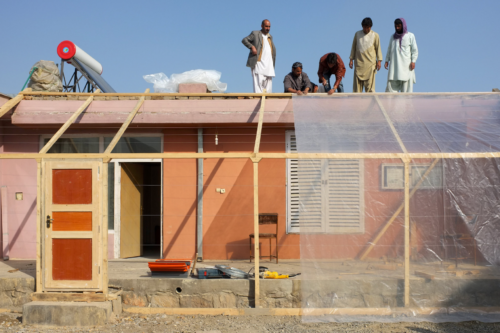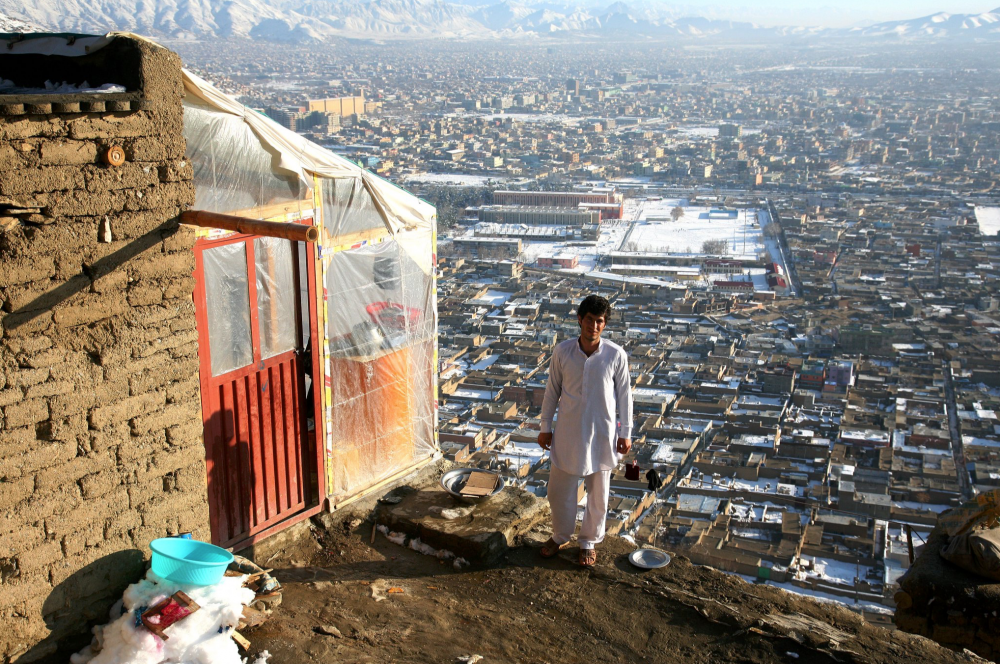After the fall of the Taliban regime in 2001, Kabul became one of the fastest growing cities in the world with a ten-fold increase in population. Today, the city is home to over 4 million people. This growth, however, has led to an immense strain on urban planning efforts, public services and pressure on the environment. Kabul ranks among the highest cities worldwide for low air quality and pollution. The World Health Organization (WHO) estimates that 26% of deaths in Afghanistan are due to air pollution and environmental risks.
Afghanistan’s dry continental climate means that the summers are very hot and the winters very cold. Most homes are not adequately built for the sub-zero temperatures and, therefore, heating is a necessary and often costly consideration for most families.
At the same time, Afghanistan benefits from almost 300 days of sun each year, opening up opportunities to capture solar energy, a tremendously attractive alternative to environmentally harmful and expensive fuels.
The EU SWITCH-Asia funded Kabul Green Homes Project, also supported by the French Development Agency, was implemented by Geres in Afghanistan and its lo cal partners, Rural Movement Organization (RMO) and Afghanistan Microfinance Association (AMA), in order to tackle Kabul’s energy crisis by fostering the dissemination of energy saving solutions for private homes.
cal partners, Rural Movement Organization (RMO) and Afghanistan Microfinance Association (AMA), in order to tackle Kabul’s energy crisis by fostering the dissemination of energy saving solutions for private homes.
Given the substantial level of sunlight in Afghanistan, the energy saving solutions developed and promoted by the project team were based on passive solar energy solutions. In order to ensure the sustainability of this initiative even after the project’s completion, a viable value chain has been created between local afghan microfinance institutions, local producers, including retailers and small and medium-sized enterprises, and households.
Solutions packages have been designed intentionally to be simple, practical, and ones that could be implemented with building materials available in local markets, requiring little to no machinery. The first bioclimatic solutions proposed were solar verandas, ones that Geres started developing in Ladakh, India, around 1990. Four solar veranda models have been proposed across the 15 districts of intervention in compliance with household typology (south orientation, absence of shade, presence of windows, size of the main wall) and value of the investment.
Roof thermal insulation solutions also helped address the issue of energy loss in traditional houses made of wooden beams and mud. To counter heat waste, this type of roof can easily host an extra layer of insulation. There are two types of insulation which can be used: glass wool and expanded polystyrene sheets. Double Glazed Windows are another method of optimising energy collection for large south facing windows. A second layer of glass with a vacuum between the 2 glasses drastically reduces heat waste.

In terms of cooking solutions, oven caps were proposed to households that used an indoor oven in their kitchen for bakery, water boiling and even cooking without any exhaust pipe. This solution greatly reduced indoor smoke and improved heating and cooking efficiency. Solar cookers were also included as a viable solution.
Lessons learnt
The four year-project has demonstrated that there is a clear need among the urban population of Kabul, particularly in low-income areas, for improving living conditions. An overwhelming majority of respondents who joined the studies conducted in the context of this project said they wanted the dissemination of energy saving solutions to continue as they believe these meet their needs.
The success of this project and its predecessor (the Central Highlands Program and Energy as a key factor of local economic development and poverty reduction to improve living conditions in Afghanistan and Tajikistan) has shown the market readiness to adopt more energy saving solutions in Kabul and more generally in Afghanistan. The political, economic and environmental landscapes have converged to create the ‘perfect storm’ for scaling up these actions. Furthermore, there is growing interest in the environmental agenda of the country from international and national institutions and donors alike. There is also a clear willingness from beneficiaries and trained enterprises and craftsmen to expand these solution installations among their family and friend networks. Awareness and reputation of the green homes is most effectively done through personal networks within the communities.
However, there is a significant discrepancy in terms of quality between the solutions disseminated with Geres’ technical input and others replicated without the organization’s support. If households have to start investing in costly maintenance and if solutions do not effectively warm their homes, this could affect the reputation of energy saving solutions promoted so far.
Given that most of the energy saving solutions were installed thanks to savings and personal loans, it is important to consider the economic situation of the target market; one that is currently worsening with the downturns from COVID-19, the political instability and the security situation. Providing access to tailored loans is key for the future. But, due to cultural barriers and the lack of ability to repay the loans, so far, the “green loans” have been more widely used by small and medium-enterprises rather than by households.

